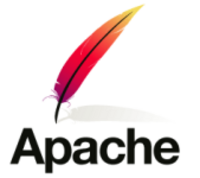
AWS Elastic Beanstalk
AWS Elastic Beanstalk simplifies the deployment and scaling of web applications by allowing users to upload their code directly. It automates tasks such as capacity provisioning, load balancing, and health monitoring, enabling developers to concentrate on coding while retaining control over AWS resources. Applications can be effortlessly scaled to handle traffic surges, optimizing both performance and costs.
Top AWS Elastic Beanstalk Alternatives
Datadog Cloud Monitoring
Datadog Cloud Monitoring offers a unified platform for real-time observability across infrastructure, applications, and security.
Rollbar
Rollbar offers a robust solution for real-time error discovery, enabling teams to quickly identify and resolve issues before they impact users.
Vercel
Vercel enables teams to ship products six times faster by offering a serverless architecture that combines speed, scalability, and reliability.
VINYL
VINYL is a groundbreaking no-code enterprise application development platform that empowers users to create visually stunning applications and analytics from various data sources without any coding.
Apache Server
The Apache HTTP Server (httpd) is a robust, open-source web server solution designed for modern operating systems, including UNIX and Windows.
Stackify Retrace
Stackify Retrace enhances application performance through code-level monitoring and observability...
Optimizely
With integrated AI and machine-learning, it enhances every step of the marketing lifecycle, ensuring effective...
Telnyx
With an extensive array of APIs, intuitive SDKs, and tools, developers can seamlessly integrate advanced...
IBM DOORS Next Generation
It fosters collaboration across projects by providing real-time insights and analytics, ensuring stakeholders remain aligned...
JDeveloper
It streamlines the entire application lifecycle and supports various platforms, including Windows, Linux, and Mac...
CleverTap
It enables businesses to harness big data for targeted engagement, real-time experimentation, and personalized interactions...
Crashlytics
Utilizing AI-driven insights from Gemini and Firebase, it accelerates root cause analysis...
Salesforce Platform
With features like Customer 360, automation, and robust security, it enables businesses to build scalable...
Visual LANSA
It simplifies development by minimizing the need for diverse technical skills and provides robust features...
App Cloud
With low-code tools, users can build and customize Agentforce and Customer 360 apps seamlessly...
AWS Elastic Beanstalk Review and Overview
By using AWS Elastic Beanstalk, you can manage and also deploy applications in the Cloud of AWS. You don’t have to bother about the infrastructure that is needed for running the application.
Overview
AWS Elastic Beanstalk helps in creating fault-tolerant applications that can run on the Cloud of Amazon Web services. The software builds a supported platform version and gives you one or more AWS resources as soon as you deploy the application. There is a provision of Elastic Beanstalk console and Command-line interface that helps you in interacting with the Elastic Beanstalk.
You also get the option of changing the size of an EC2 instance directly through the web interface. You need to upload the application in the form of an application source bundle along with some information about the application. After this, the Elastic Beanstalk configures the resources that are needed to run your application.
Concepts
The application is considered as the logical collection of components like versions, environments, and configurations. Conceptually, in Elastic Beanstalk, it is considered as a folder. The version of the application indicates the deployable code for the web application. Applications can have many versions, but each version is unique.
The environment is basically the collection of AWS resources that are needed to run an application. Then there is a concept of Environment tier that is used to designate the type of application that the environment can run. The parameters and the settings needed to make the environment workable are placed in the Environment configuration feature.
Benefits of Elastic Beanstalk
This means of deploying an application is easy and fast. You make the use of its console, a Git repository, and an IDE to launch the application in the environment. The software automatically does the monitoring and scaling. Beanstalk handles the application stack for you and hence frees you from the burden of becoming an expert in the field of development. It has the ability to scale your application up and down based on your specific need. You get the option of making a selection of the AWS resources. You get complete control over the resources.
Top AWS Elastic Beanstalk Features
- Simplified application deployment
- Automatic capacity provisioning
- Load balancing included
- Auto-scaling capabilities
- Application health monitoring
- Supports multiple programming languages
- Flexible resource management
- IDE integration support
- Seamless legacy migration
- Secure private network connectivity
- Cost-effective resource usage
- Customizable environment settings
- Easy rollback of deployments
- Version control integration
- Fast deployment times
- No additional service charges
- Web-based management console
- Comprehensive documentation available
- Community support and resources.














